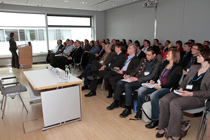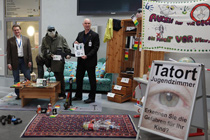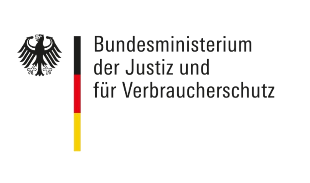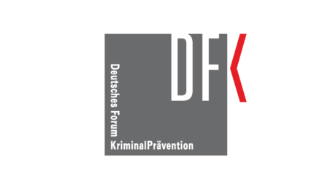





Das Internationale Congress Center ICM in München beherbergte am 16. & 17. April 2012 den 17. Deutschen Präventionstag inklusive des Abendempfanges. Die Schirmherrschaft hatten der Münchener Oberbürgermeister Christian Ude und der Bayerische Ministerpräsident Horst Seehofer gemeinsam inne. Schwerpunkt der Debatten war das Thema „Sicher Leben in Stadt und Land“.
25 Jahre Deutscher Präventionstag
Ein Beitrag von Prof. Dr. Irvin Waller
Emeritierter Kriminologieprofessor (Ottawa/Kanada); global tätiger Berater, Autor und Präventionsforscher
From Punishment To Prevention: Beyond Science To Secrets For Ending Violent Crime
In 2012, the evidence and logic for shifting funding from punishment to prevention to reduce crime victimization was clear but not yet used by anyone but the pioneers. In 2020, the evidence and logic is stronger, essentials to get it used effectively are associated with some city successes and lack of their use leads to government failures, and now the ways to get buy-in are clear.
We need to shift from what works to how to get what works implemented. The challenge is to change status quo political culture that pays more and more for what does not work to investing in what works, saves lives, protects women, and saves taxes. This requires a new way of thinking among those who want prevention to realise its dividends. Some of us and our national networks must focus on raising awareness, training prevention advocates, collaborating with movements wanting to save lives. A part of that narrative is that prevention is affordable, popular, fair and invests positively in people.
In 1985, the governments of the world at the UN General Assembly resolved to implement social, health, including mental health, education, economic and specific crime prevention policies to reduce victimization. The aim was to reduce the unacceptable numbers of victms of crime and reduce the consequences and costs of crime.
By 2012, the German Prevention Congress was attracting thousands of participants, but the investment to act on the UNGA resolution across the world was limited to a patchwork of actions by a small group of pioneering governments, regional governments, and cities. There were also networks like the European Forum for Urban Security that shared an interest in urban safety but were not demonstrating whether they were achieving results.
In 2012, I had the privilege to give the plenary address (for the first time in English) on my book Less Law, More Order: The Truth about Reducing Crime,1 which had recently been translated and published in German. The book used the best evidence and best practice, at that time, from across the world, to conclude that the harm to victims and society from current levels of crime is not inevitable but preventable. It focused on sharing four evidence based truths that logically demonstrated that prevention is the most effective and cost effective way to reduce crime.
- Escalating expenditures on police and incarceration on our current system of justice focused on punishment, incapacitation and rehabilitation of offenders does little to reduce crime any further. These costs are increasingly expensive. It is also a system that punishes and allows victimisation disproportionately of the poor and racial minorities and fails to protect women from violence.
- Several strategies that tackle risk factors before crime happens have been evaluated scientifically and so we know which are proven to reduce crime. Where cost benefit analysis is available it confirms that these are much more cost effective than the status quo. In addition to saving taxes, those that invest in social development are also beneficial for the futures of young men and their families.
- Governments of the world have agreed on the best ways to apply proven preventive strategies and so reduce victimization, use diagnosis, planning and mobilising different sectors that best situated to tackle the causes of crime. These agreements started at international conferences involving many different governments and cities in Europe and the Americas but now have been agreed by all UN governments at UN Economic and Social Council (ECOSOC).
- Rebalancing funding from only paying for more police, courts and corrections to investing adequately in proven prevention and problem solving policing gives a dividend of less crime and savings to taxpayers. The equivalent of ten percent of the police and incarceration budget spent smartly on proven strategies using the agreed planning strategies will provide savings in quality of life and taxes much greater than the original investment.
Scienc and Secrets of Ending Violent Crime2
In 2019, I published my last book focused on Science and Secrets of Ending Violent Crime. This updated the quantity of the evidence available from an expanding number of prestigious sources. It clarified the guidelines on implementation from more prestigious sources and added more examples of cities that had succeeded and governments that failed with prevention. It pioneered a new section on the secrets of how to shift policy from over reliance on ineffective spending on police, courts and incarceration to get buy-in. This brought together the best thinking on how to get the tranformations from the status quo to more positive investments in people that save lives, protect women and avert trauma, while saving billions of dollars.
The book brings together and analyses three of the four evidence based realities of the first book but adds this new section and sets these in the context of the management by results aspirations of significant violence reduction within the UN Sustainable Development Goals. It proposes decisive actions now to get results within the next decade.
- It is not just that the status quo systems of police, courts and corrections are not achieving but that this allows significant suffering. The victimization by crime of citizens creates human tragedies that impose financial losses, injuries, and emotional trauma, which leads to serious health and mental consequences. These impacts on people and their families are widespread, are expensive to taxpayers, and in developing countries decrease GDP. These impacts are not reduced significantly by escalating expenditures on criminal justice, which are crowding out solutions that work.
- It is not just that we know what works but we are able to achieve significant reductions in suffering. The compelling and empirical evidence, that identifies strategies that have been proven to prevent crime, has become more solid, publicly available and agreed. Several of these strategies have prevented crime at 50% better than the current system and so saved lives and taxes. But this is not enough for the strategies to be used and so more is needed as set out under item 4.
- It is not just that we know what reduces suffering but we know that its application to achieve the sustained outcomes is not just short term projects but a transformation to crime prevention and community safety planning. Governments of the world have agreed, at the UN ECOSOC and among some Latin American government experts, on the best way to plan and organise to apply the knowledge in order to reduce victimization. But few governments have invested in proven actions that prevent crime. A slowly growing number of cities have used the key ingredients to achieve and sustain a 50% reduction in violent crime. Much more is needed as set out under item 4.
- It is not just that we know what does not decrease suffering, that we know what does, that we know how to plan its successful implementation, but we need more to overcome the resistance to change. Those secrets of getting the tranformations and buy-in include:
- raising awareness about the solid natures of science of violence prevention and what it identifies as working, as well as the essentials for its successful application. Training is needed for the proponents of prevention so that they can raise awareness among the public and influence politicians to choose to make the transformations needed;
- making the compelling case for investment that it saves lives, protects women and averts trauma while being affordable and popular with important increases in GDP for poorer countries;
- uses government commitment to targets for SDG 16 and others, to get decisive action now;
- uses social media and other marketing strategies as well as collaborating with street and social media movements such as Black lives matter and Me Too to get action on the necessary transformations.
The four items in this new section 4 identifies some essential steps if we are to see sustained and adequate investment in actions that will reduce violent crime. These are discussed in more detail in this book. Here are some brief comments.
In 2015, government leaders at the UN General Assembly made the commitment to achieve the UN Sustainable Development Goals by 2030. Among the goals are two that include a focus on significant reductions in violence against women and girls, violence against children, and homicides and violent crime. These goals about a new way of doing business that requires governments and cities to commit to the goals and work out how they can take actions now and over the years to achieve them by 2030. The goals are measurable and what gets measured gets done.
The principle resistance to making the transformations come from political systems that have set up bureaucracies to continue the system, regardless of whether it is working. This includes the persons who work in that system and are often unionised.
Among the ways to get political decisions might be called the bandwagon Effect. It requires special efforts to make politicians aware of the knowledge and options and convince them it is possible. But an important way to do this is to get them to join networks where other politicians are making the changes. This will require significant and skilled investment using the four strategies in the fourth section to move from in principle commitment to in action success.
At the government level, the UNODC and WHO meetings provide a forum for this to take place. Some governments have begun to work on the INSPIRE framework and some governments have become path finder governments to reduce violence against children. Governments committed to the SDGs in 2015 but have not yet taken the decisive actions to make the transformations.
Latin America and the Caribbean are facing particular problems because their levels of homicides and violent crime known to the police are much higher than other parts of the world. Senior government and city representatives, organized by UN Institute on Crime Prevention and Criminal Justice (ILANUD) have begun to bring government ministers, mayors and other officials to discuss the evidence and success stories.
At the city level, both the Peace in Our Cities campaign and the Global Parliament of Mayors have increasingly got progressive mayors to make a commitment to reduce violence by 50% by 2030. The next step is to identify the actions needed now to realise their commitment.
Street Demonstrations, Religious Pressure and Social Media have an important role to play. In the USA, movements such as Me too, Black Lives Matters, Marching for our Lives and others are focusing on victims of violence and a flawed system of justice and so calling for transformations. These are bringing pressure on politicians and at least greater discussion of possible transformations. Some of the discussion is about seemingly attractive solutions that have already been shown not to work but some is about evidence based solutions.
A new organization has started to bring the world´s major religions together around advancing change to achieve SDG16. The Faith Based Coalition for Crime Prevention and Justice is raising awareness and exchanges between faith leaders and experts. It is hoped that it will mobilise faith based organizations to raise awareness, engage locally and pressure nationally.
Transformations imply shifts in employment. Policing accounts for many of the jobs in the status quo criminal justice system. The fairest way to transition to a prevention framework will be to stop hiring new officers and retrain some of those already hired to deal with new types of crime relating to the environment and cyber security. Lawyers will be able to shift to specialities dealing with environment and cyber security as well as other non-crime related fields. Prison staff, particularly in the USA, will be needed much less. Some of this can be managed through retirement but some of it will need retraining into other fields, including working in prevention related jobs.
Conclusion
Reducing crime, particularly violent crime, significantly is eminently achievable and only through prevention. It requires a new way of thinking among those who want prevention to realise its dividends. Some of us and our national networks must focus on raising awareness, training prevention advocates, collaborating with movements wanting to save lives, and working around national and city budgeting. One part of that is about the solid science and essentials for implementation. The other and new part is about marketing prevention in the face to face and on-line world by emphasising the momentum around successes as well as the logic that it is affordable, popular, fair and invests positively in people.
Selected References
Canadian Municipal Network for Crime Prevention, Making Cities Safer: Action Briefs for Municipal Stakeholders (http://safercities.ca/evidence-on-crime-prevention)
Waller, Irvin, Rights for Victims of Crime: Rebalancing Justice, New York City, Rowman and Littlefield, 2010
www.irvinwaller.org (blog and twitter feed on preventing crime and victim services)
World Health Organization, INSPIRE, Geneva (https://www.who.int/violence_injury_prevention/violence/inspire-package/en/)
World Health Organization A global knowledge platform for preventing violence (https://bit.ly/3md9syr)
1 Waller, Irvin: Mehr Recht und Ordnung! – oder doch lieber weniger Kriminalität? (Titel der englischen Originalausgabe: Less law, more Order: the truth about Reducing crime), herausgegeben im Auftrag des Deutschen Präventionstages von Burkhard Hasenpusch und Erich Marks, Mönchengladbach 2011
2 Waller, Irvin, Science and Secrets of Ending Violent Crime, New York City, Rowman and Littlefield, 2019

